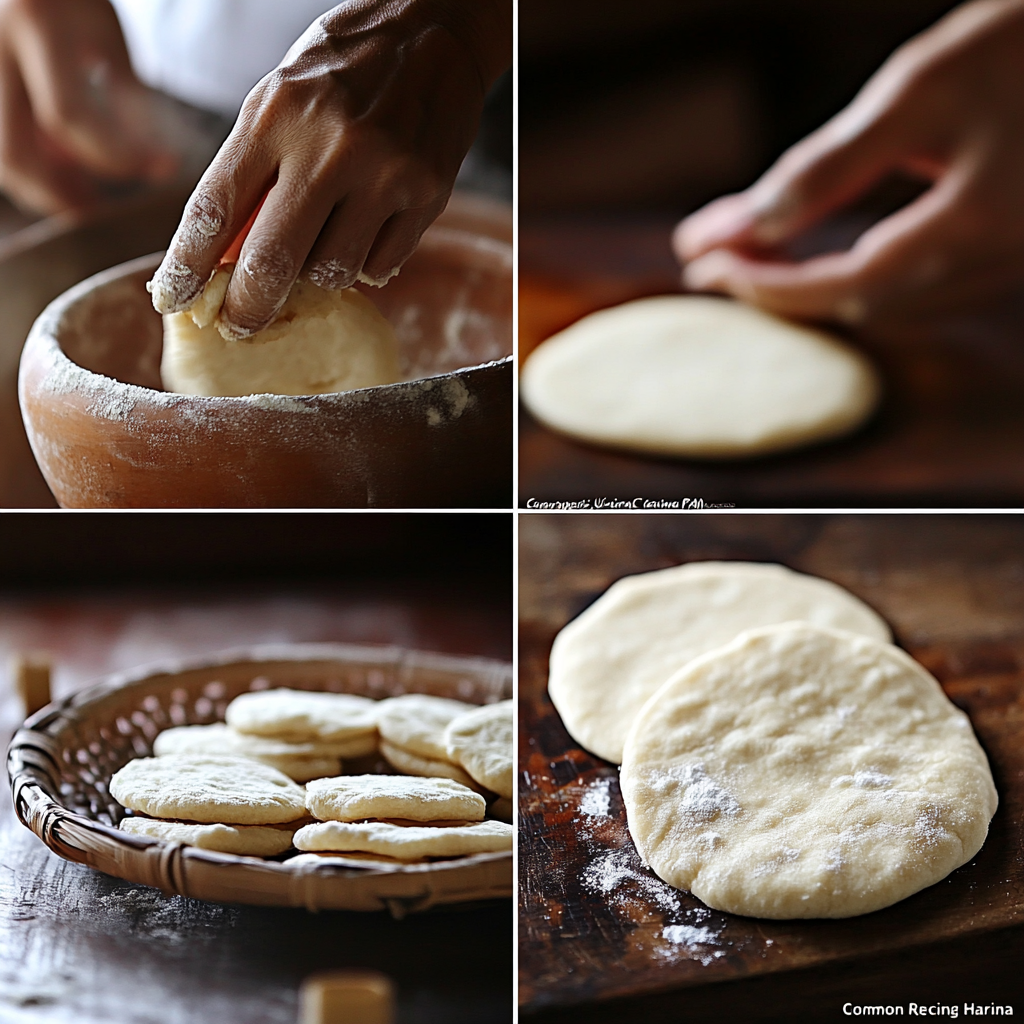If you love Latin American cuisine, especially dishes from Venezuela and Colombia, you’ve likely come across Harina PAN. Known for its versatility, this pre-cooked cornmeal is the foundation of several beloved dishes, such as arepas, empanadas, and hallacas. But with the rising focus on healthy eating, many are left wondering: Is Harina PAN healthy?
In this detailed article, we’ll explore what Harina PAN is, its nutritional benefits and drawbacks, how it fits into different diets, and how it compares to other corn flours like masa harina and masarepa. We will also provide answers to the most common questions about Harina PAN to help you make informed dietary choices.
What Is Harina PAN?

Harina PAN, short for Producto Alimenticio Nacional, is a brand of pre-cooked cornmeal made from 100% white or yellow corn. First introduced in Venezuela in the 1960s, it quickly became a staple in Latin American households. It’s prized for its ability to make dishes like arepas with minimal effort—just add water, and you can shape and cook the dough.
Unlike traditional cornmeal, Harina PAN goes through a cooking process before it’s milled, which gives it a unique texture and fast preparation time. This also sets it apart from other corn products like masa harina (used for making tortillas) and masarepa (used for making Colombian arepas).
If you’re curious about the history and cultural significance of this versatile product, you can learn more about Harina PAN on Wikipedia.
Nutritional Profile of Harina PAN
When discussing whether Harina PAN is healthy, it’s essential to dive into its nutritional composition. Below is the nutritional profile of Harina PAN per 100 grams:
- Calories: 350 kcal
- Carbohydrates: 79 grams
- Fiber: 4 grams
- Protein: 8 grams
- Fats: 1.2 grams
- Iron: 2.7 mg (15% of Daily Value)
- Calcium: 10 mg (1% of Daily Value)
- No gluten
Key Benefits:
- High in Carbohydrates: Perfect for those who need a quick energy source.
- Low in Fat: Contains minimal fats, making it suitable for low-fat diets.
- Gluten-Free: Ideal for people with gluten intolerance or celiac disease.
However, the carbohydrate content could be a concern for people managing their blood sugar levels. You might also wonder about its role compared to other corn-based flours. Learn more about masarepa and how it compares to Harina PAN on The Spruce Eats.
Health Benefits of Harina PAN
Now that we’ve looked at its nutritional content, let’s explore the potential health benefits of Harina PAN.
1. High Fiber Content
Although Harina PAN isn’t as high in fiber as whole grains, it still provides 4 grams of fiber per 100 grams. Fiber is crucial for:
- Digestive health
- Managing cholesterol levels
- Stabilizing blood sugar levels
2. Low in Fat
With only 1.2 grams of fat per 100 grams, Harina PAN is a low-fat option compared to other carb sources. This makes it a good choice for those looking to cut down on dietary fats.
3. Gluten-Free
Because Harina PAN is made from corn, it’s naturally gluten-free, making it a great alternative for people with gluten sensitivities or celiac disease.
4. Versatile and Easy to Use
One of the biggest advantages of Harina PAN is its versatility. You can use it to make:
- Arepas: Traditional Venezuelan or Colombian corn cakes
- Empanadas: Corn-based turnovers stuffed with meat, cheese, or vegetables
- Hallacas: A Venezuelan dish similar to tamales
5. Source of Essential Minerals
While not rich in a broad spectrum of vitamins, Harina PAN does provide:
- Iron: Important for preventing anemia
- Calcium: Although minimal, it can contribute to your daily intake
Potential Health Concerns of Harina PAN
While Harina PAN has its benefits, there are a few concerns to consider:
1. High in Carbohydrates
Each 100 grams of Harina PAN contains about 79 grams of carbohydrates, which can cause a spike in blood sugar levels. This makes it less ideal for those on low-carb or diabetic diets unless consumed in moderation.
2. Low in Protein
At 8 grams of protein per 100 grams, Harina PAN doesn’t offer as much protein as other whole grains like quinoa or buckwheat. If you rely on it as a primary staple, you may need to complement it with protein-rich foods like beans, cheese, or eggs.
3. Limited Nutrient Profile
Unlike whole grains, which offer a more comprehensive nutrient profile, Harina PAN is somewhat limited in terms of vitamins and minerals. While it does contain iron and calcium, it’s not a rich source of other essential nutrients like B vitamins.
Harina PAN and Weight Loss: Can It Help?
If you’re trying to lose weight, you might wonder if Harina PAN fits into your diet. The answer is: It depends.
Pros for Weight Loss:
- Low in Fat: It’s lower in fat compared to other carb-heavy foods, which can help reduce overall calorie intake.
- Fiber: The fiber in Harina PAN can help you feel full for longer, reducing the urge to snack between meals.
Cons for Weight Loss:
- High in Carbohydrates: Its high carbohydrate content could work against those on low-carb or keto diets. If you’re counting calories, you may want to limit portion sizes to fit within your daily carb allotment.
Is Harina PAN Safe for Special Diets?
Let’s take a closer look at whether Harina PAN can fit into specific dietary plans:
1. Gluten-Free Diets
Yes, Harina PAN is entirely gluten-free, making it safe for those with celiac disease or gluten sensitivity.
2. Vegan and Vegetarian Diets
Since Harina PAN is made entirely from corn, it’s suitable for both vegan and vegetarian diets. Pairing it with plant-based protein sources like beans or lentils can help balance your nutrient intake.
3. Paleo and Keto Diets
Unfortunately, Harina PAN doesn’t fit well into paleo or keto diets due to its high carbohydrate content.
Harina PAN vs. Other Corn Flours: A Comparison
When it comes to corn-based flours, Harina PAN isn’t the only option. Here’s how it stacks up against other varieties:
1. Harina PAN vs. Masarepa
Both are pre-cooked corn flours, but while Harina PAN is typically used for making arepas, masarepa is more commonly found in Colombian cuisine. Their nutritional profiles are quite similar.
2. Harina PAN vs. Masa Harina
Masa harina is used primarily to make tortillas. While both flours are derived from corn, masa harina is nixtamalized, meaning the corn is treated with lime (calcium hydroxide), giving it a different texture and slightly different nutritional profile. Masa harina is more calcium-rich due to the nixtamalization process.
Common Recipes Using Harina PAN and Their Health Impacts

1. Arepas: Arepas are one of the most common uses of Harina PAN. While traditional arepas are typically pan-fried, they can also be baked for a healthier version. Pairing them with nutrient-dense fillings like avocado, beans, or lean proteins makes for a balanced meal.
2. Empanadas: These corn turnovers are often fried, which adds extra calories. Opt for baking them for a healthier alternative. Fillings like vegetables, chicken, or beans can make them both nutritious and delicious.
3. Hallacas: A festive dish made from corn dough stuffed with meat, vegetables, and spices. While hallacas can be calorie-dense, you can reduce the calorie content by adjusting the portion sizes of the fillings and using lean meats.
Frequently Asked Questions (FAQs)
- Is Harina PAN a processed food?
- Yes, it is a processed cornmeal product, but it doesn’t contain preservatives or additives in its traditional form.
- Can I eat Harina PAN every day?
- While it’s safe to eat Harina PAN daily, it’s important to balance it with other nutrient-rich foods to ensure you’re meeting all your dietary needs.
- Is Harina PAN healthier than white flour?
- Yes, Harina PAN is made from whole corn and is gluten-free, which makes it a healthier option compared to white flour, which is more refined and lower in fiber.
- Does Harina PAN affect blood sugar levels?
- Yes, due to its high carbohydrate content, it can cause a spike in blood sugar levels, so it should be consumed in moderation, particularly by individuals with diabetes.
- Does Harina PAN contain preservatives or additives?
- Traditional Harina PAN is free from preservatives and additives, but it’s always a good idea to check the label for any added ingredients.
Conclusion
Harina PAN is a versatile, gluten-free, and relatively low-fat option for various traditional dishes. While it provides some essential nutrients like iron and fiber, its high carbohydrate content means it should be consumed in moderation, especially for those on low-carb diets or managing blood sugar levels. Pairing Harina PAN with other nutrient-rich foods can help you create a balanced and healthy meal.
By considering its health benefits, potential drawbacks, and its fit into various diets, you can make informed decisions about incorporating Harina PAN into your meals.


